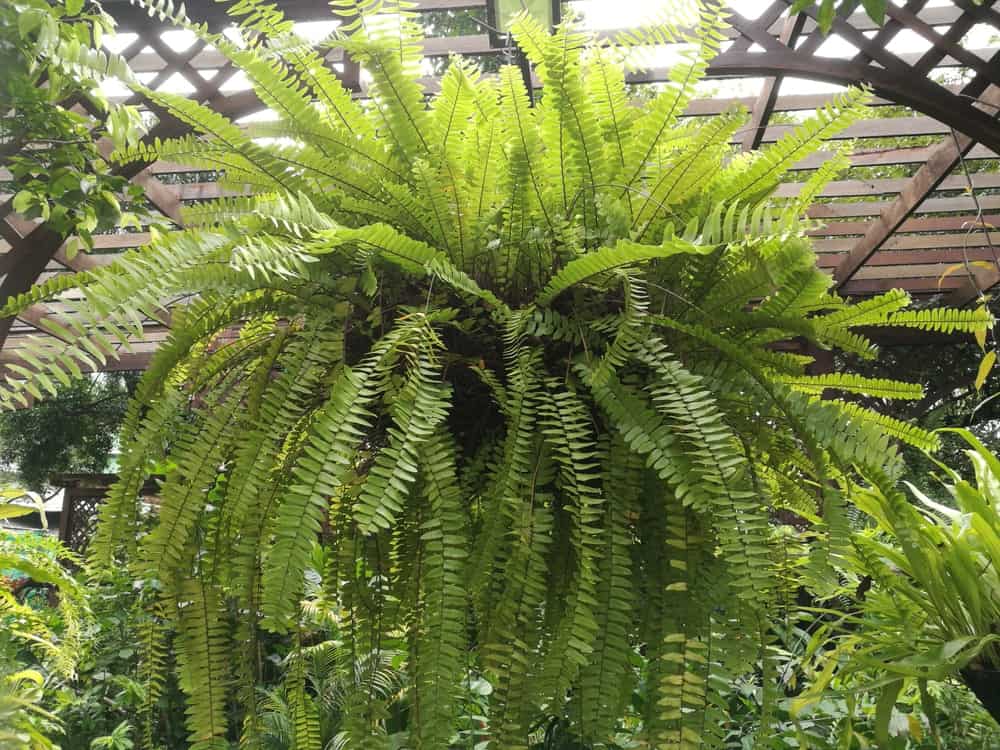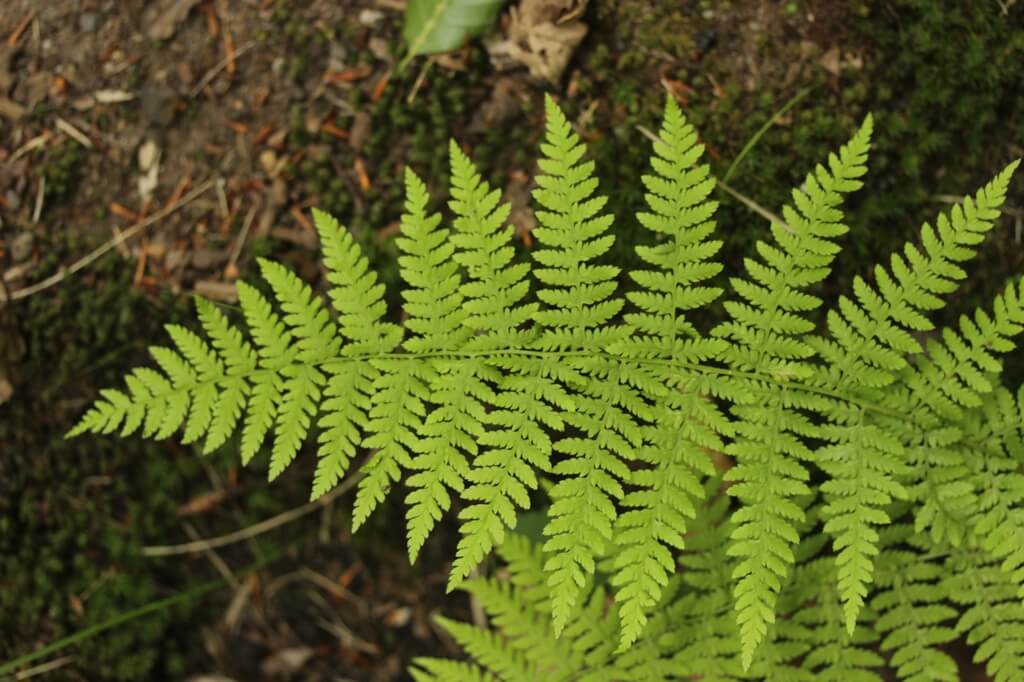A fern is a member of a group of vascular plants. Ferns reproduce through spores. They don’t need seeds or flowers for reproduction. They generally produce coiled fiddleheads, which uncoil and become fronds.
They include nearly 10,560 known extant species. Fern species generally live in a wide variety of habitats.
Some of them can grow in the mountains to deserts. Some of them can grow in water or open fields. Most of the ferns also grow in tropical regions.
Uses of Ferns.
They have various uses. Some ferns are edible in a few regions, while the others add ornamental value. Generally, they favor many gardeners as ferns usually create underbrush to make them look lush green. They can be grown both indoors and outdoors, depending on their adaptability.
With their thick foliage, they create a beautiful effect for the gardens. Ferns are gardener’s favorite because of their foliage. Most of them are generally evergreens and look fabulous during winters. Plants might look incomplete as they do not have a lush appearance at the foot.
Ferns help to create underbrush or flower beds to make your plants bushier and greener. Most of them grow in shaded areas and create a good backdrop for flowers.
Though there are 20000+ types of ferns, only a few varieties can be used for decorative gardens. Most tropical ferns are used for ornamental purposes as they create a tropical effect on the gardens.
Many people who love rocky or tropical environments can use this type of fern to elevate such an effect. Some of the best indoor and outdoor ferns for gardening are listed in this article. Especially during winters, the ferns look great due to the green and glossy appearances they have.
Understanding that most of you are nature lovers, we have got you a list of exotic ferns to choose from to decorate your gardens and homes.
Types of Ferns
Hart’s Tongue Fern (Asplenium Scolipendrium)
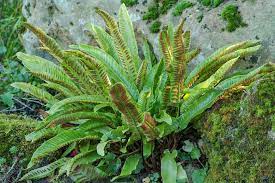
Hart’s tongue fern is light green and bright in appearance. Due to the climate, it belongs to, i.e., topical, and it looks very exotic and glossy. If you are someone who loves the exotic looks of the foliage, you can surely buy it.
But if you are looking for having Hart’s tongue fern in the temperate zone, do not worry. You still have other varieties of it to chose from. The reason it is called Hart’s tongue fern is that it has a beautiful rosette with arching leaves, which are neither divided nor frilled and look like little tongues.
While this fern starts forming spores, it creates a brown pigment on its leaves’ underside, which makes it look more attractive. You can grow it on the direct ground or in pots. It will add a tropical climate effect to wherever you place it because of its appearance.
Precautions
- It should be exposed in either partially shaded or fully shaded areas only.
- They grow up to 1 or 2 feet.
- Its hardiness is from 5 to 9 USDA zones.
- The huge advantage is that it can grow in any soil if you keep it moist.
Grey Ghost Lady Fern (Athyrium Niponicum)
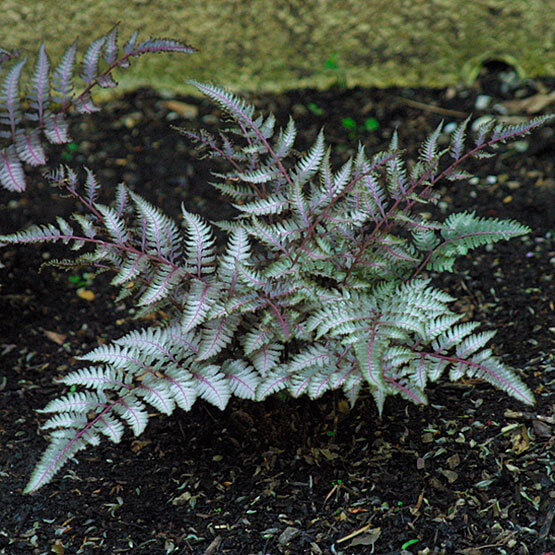
As the name speaks, Grey Ghost is just one-of-a-kind beauties as it woos everyone with its silvery tone. It looks beautiful with a reddish-purple midrib, while the rest of the plant is grey due to its silvery tone. It has bio pinnate leaves, which brings an ethereal effect to your garden. This type of fern is perfect for a mixture of modernity and traditionality in the gardens.
Precautions
- They can be exposed under partially shaded or fully shaded areas.
- They can grow up to 2 or 3 feet.
- They have hardiness from 4 to 9 USDA zones.
- They can grow in clay, sandy soil, acidic or neutral soils if kept well-drained and humid.
Staghorn Fern (Platycerium Spp.)
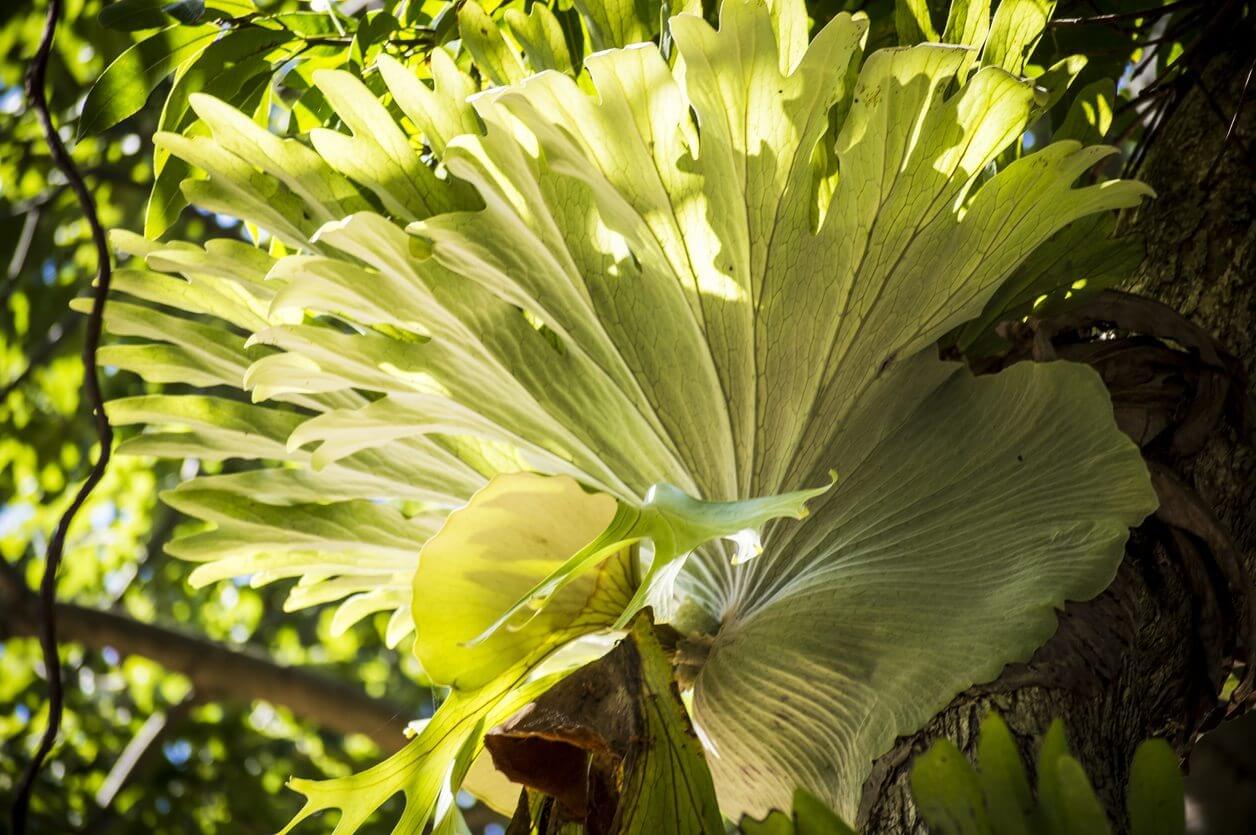
If you are someone who loves to decorate your spaces with plants, this type of fern is absolute for you as they look beautiful with the “horns of a deer” appearance. They get the name Staghorn from their appearance. They look fantastic if kept in hanging baskets.
They belong to the tropical climate, which makes them be glossy and bright green. Staghorn ferns are epiphytes, i.e., plants that grow on other plants. They grow naturally and absorb the nutrients and humidity directly from the air. If you are willing to grow a rocky garden, they are an attractive choice as they add a wild look to the garden.
Precautions
- They can grow in bright light but not under direct sun.
- They can grow up to 3 feet.
- Their hardiness is above 8 USDA zones.
- They can grow either on other plants or on a wood bark if placed in soil.
Delta Maidenhair (Adiantum Raddianum)
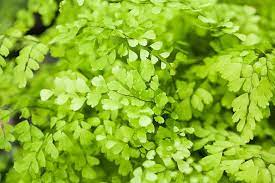
This type of fern is exquisite and exotic in its appearance. They have delta-shaped leaves and purple-black stalk, which create a rich foliage effect. Delta ferns can be used as decorative ferns due to their beautiful appearance. You can grow them with tropical flowers to create a contrast that makes them look more attractive. They are perfect if you are trying to create a temperate look in your garden.
Precautions
- They can be exposed to partially sunny or fully shaded areas, but growing them indoors makes sure to keep them away from the direct light.
- They can grow up to 15 to 24 inches.
- They have hardiness from 10 to 11 USDA zones.
- They can grow in well-drained and humid, alkaline, or neutral soil, which should be fertile.
Hen and Chickens Fern (Asplenium Bulbiferun)
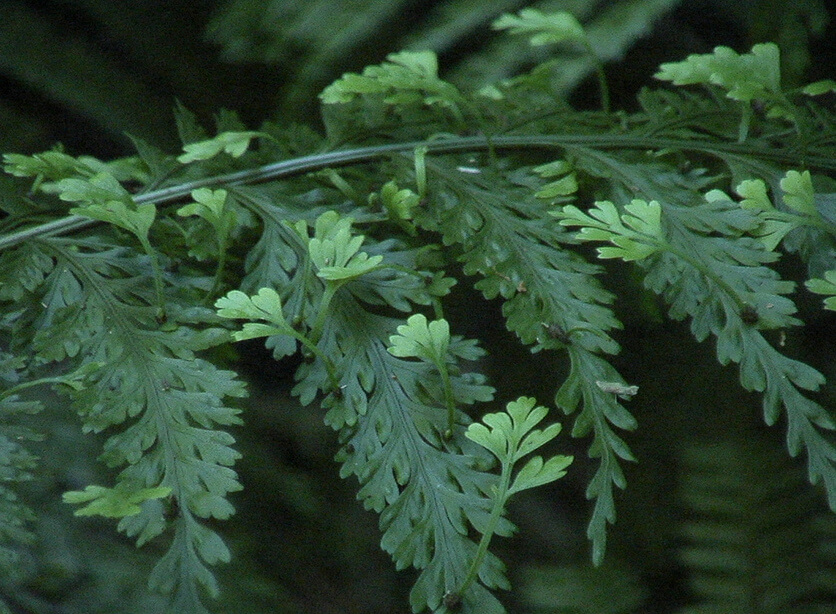
This is one of the types of ferns that are slightly different from other types of ferns as they have a different appearance altogether. They have various thin branches which arch very nicely to create a pine tree-like appearance. They look like feathers which makes them a decorative plant. If kept with flower beds, they just add more attraction to them.
Precautions
- They can only be exposed to partially shaded areas.
- They can grow up to 3 or 4 feet.
- Their hardiness is 9 to 11 to USDA zones.
- They can grow in almost any soil if well-drained and kept moist.
Kangaroo Fern (Microrosum Diversifoliun)
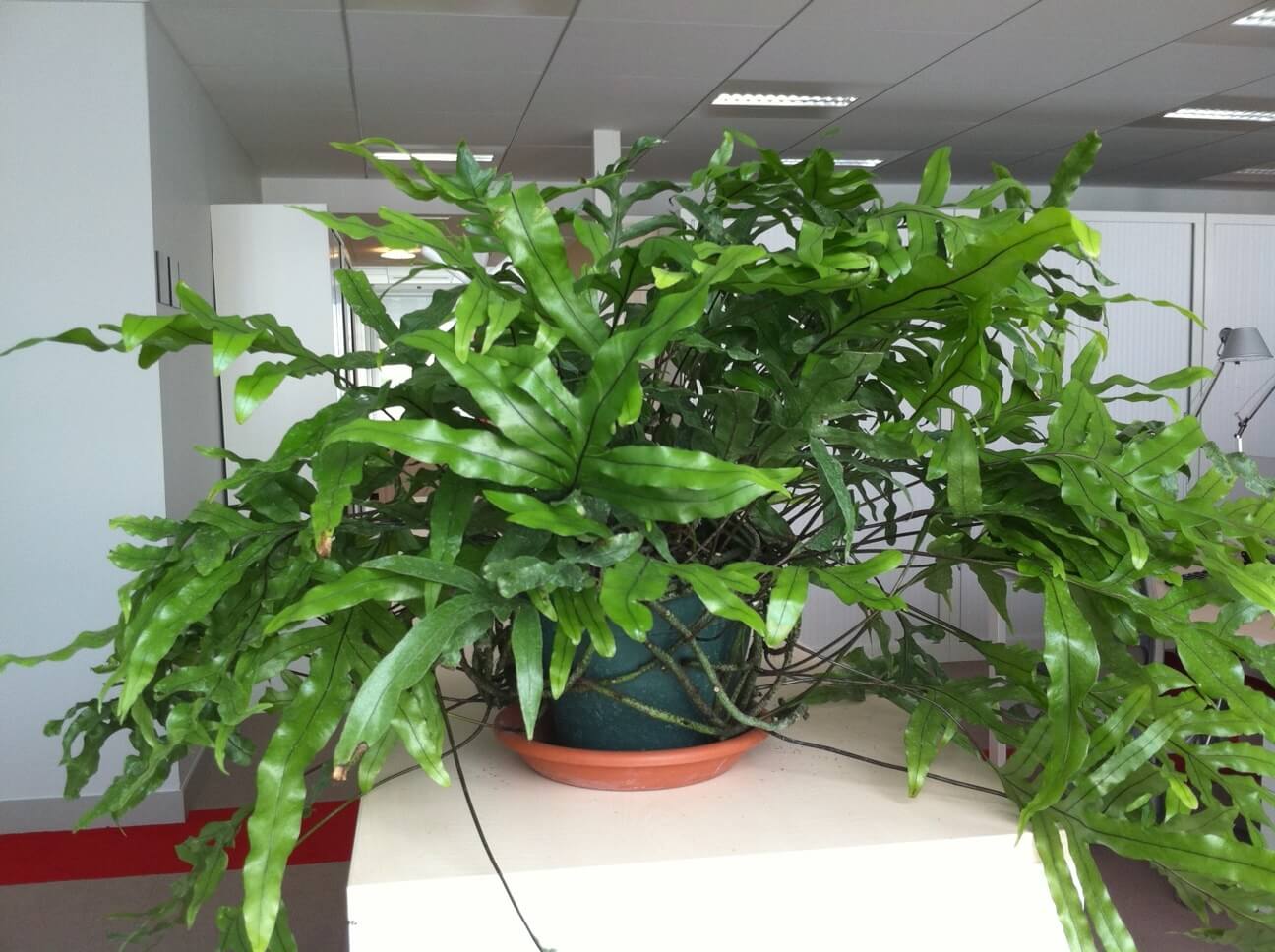
This type of fern is dark green and adds a very exotic look to gardens. They have a very glossy appearance with leaves divided into 14 to 22 tongue-like parts. They add a tropical effect to your gardens if kept beside bold and showy plants. They look exquisite when kept indoors.
Precautions
- They can be kept in fully shaded areas. You should always keep them away from direct sunlight.
- They can grow up to 1 foot in height and 2 to 3 feet in width.
- Their hardiness is from 9 to 11 USDA zones.
- They grow in acidic or neutral soils if they are kept well-drained.
Bird’s Nest Fern (Asplenium Nidum)
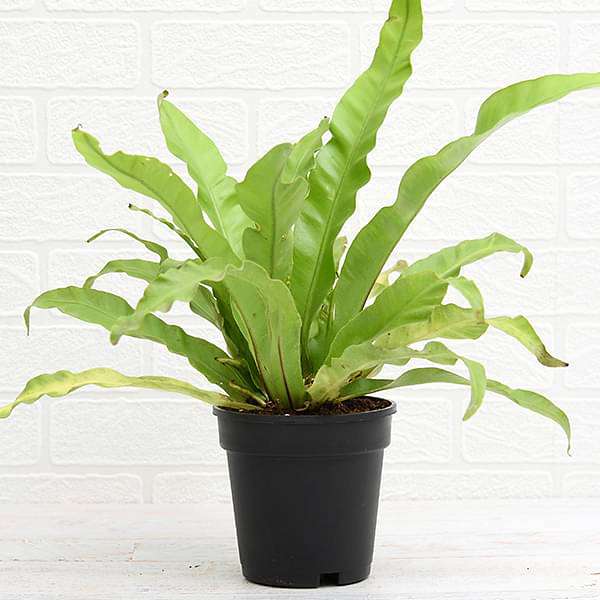
This type of fern has tongue shapes fronds. They are glossy with a dark midrib and wavy margins. Bird’s nest ferns curl at their top while they grow upright without any archy movement. This appearance makes them look like a nest.
They are epiphytes and can grow on plants, hanging baskets with wooden bark in the soil, or the rock gardens. They add a very exotic look to the garden with their appearance. Indoor spaces also look great when kept in ordinary pots by adding a tropical touch to the environment.
Precautions
- They can be grown in partially or fully shaded areas. They should be protected from direct sunlight.
- These ferns can grow up to 4 or 5 feet outdoors and 1 or 2 feet indoors.
- Their hardiness is from 11 to 12 USDA zones.
- They grow in acidic or neutral sandy soil if kept well-drained and humid.
Painted Lady Fern (Athyrium Niponicum)
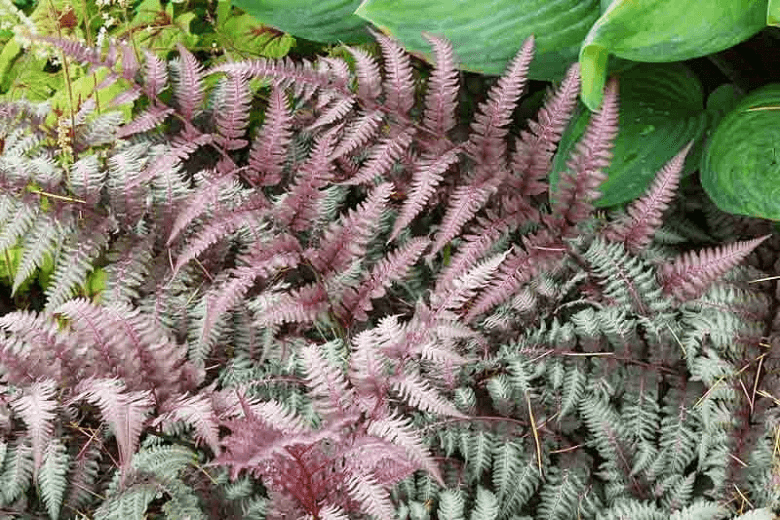
Painted Lady ferns are beautiful in most of the types of ferns as they come with silvery lining as silver-grey on the foliage and silver, green on the fronds as they mature. These types of ferns have burgundy-purple shade fronds.
As they have silver-green matured fronds, the immature silver-gray fronds and matured fronds create a beautiful contrast that looks like a decorative tree. They look beautiful in any garden, especially beside any ponds.
Precautions
- They can be exposed in partially or fully shaded areas.
- They grow up to 1 or 2 feet tall.
- These ferns have hardiness from 5 to 8 USDA zones.
- They grow in acidic or neutral sandy soils if kept well-drained and humid.
Eagle Fern (Pteridium Aquilinum)
Ferns that are not only used for decorative purposes but also edible purposes are the best. Eagle fern is one of the types of ferns that are used to eat in eastern Asian regions. They have dark green fronds, which are in log and triangular shape.
They make fantastic underbrush as they are deciduous. As these are big plants, they need more expansive areas to grow. But as we speak of its edible uses, it might be hazardous for many people, so we don’t recommend eating it.
Precautions
- They can be exposed in fully sunny or partially shaded areas.
- They grow up to 4 or 6 feet tall.
- Their hardiness is from 4 to 7 USDA zones.
- These ferns can grow in sandy soils with an acidic PH.
Crocodile Fern (Microsorun Musifolium ‘Crocodyllus’)
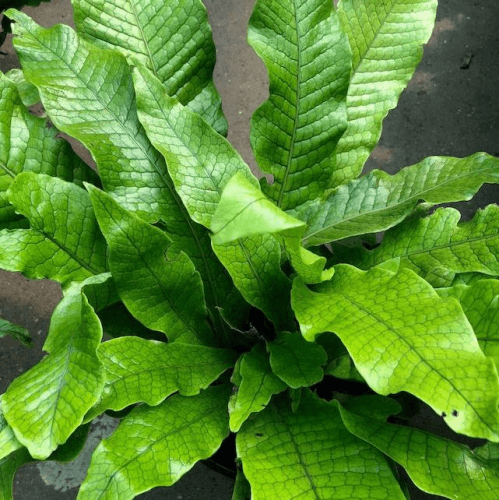
Crocodile fern is an exotic fern as it appears like crocodile skin. These types of ferns have fronds that are fleshy in appearance and are in light green color. They have raised patches with shallow grooves, which makes them look like reptile skin. This makes an eye-grabbing houseplant but can make a great decor plant for your garden. It is an epiphyte so that it can grow on trunks of other plants.
Precautions
- They can be exposed under fully or partially shaded areas. Direct sunlight should be avoided.
- They can grow up to 2 to 5 feet.
- They are hardy to USDA zones 10 to 11.
- They can grow in peat moss and perlite mediums. The pH should be neutral or alkaline.
Holly Fern (Cyrtomium Falcatum)
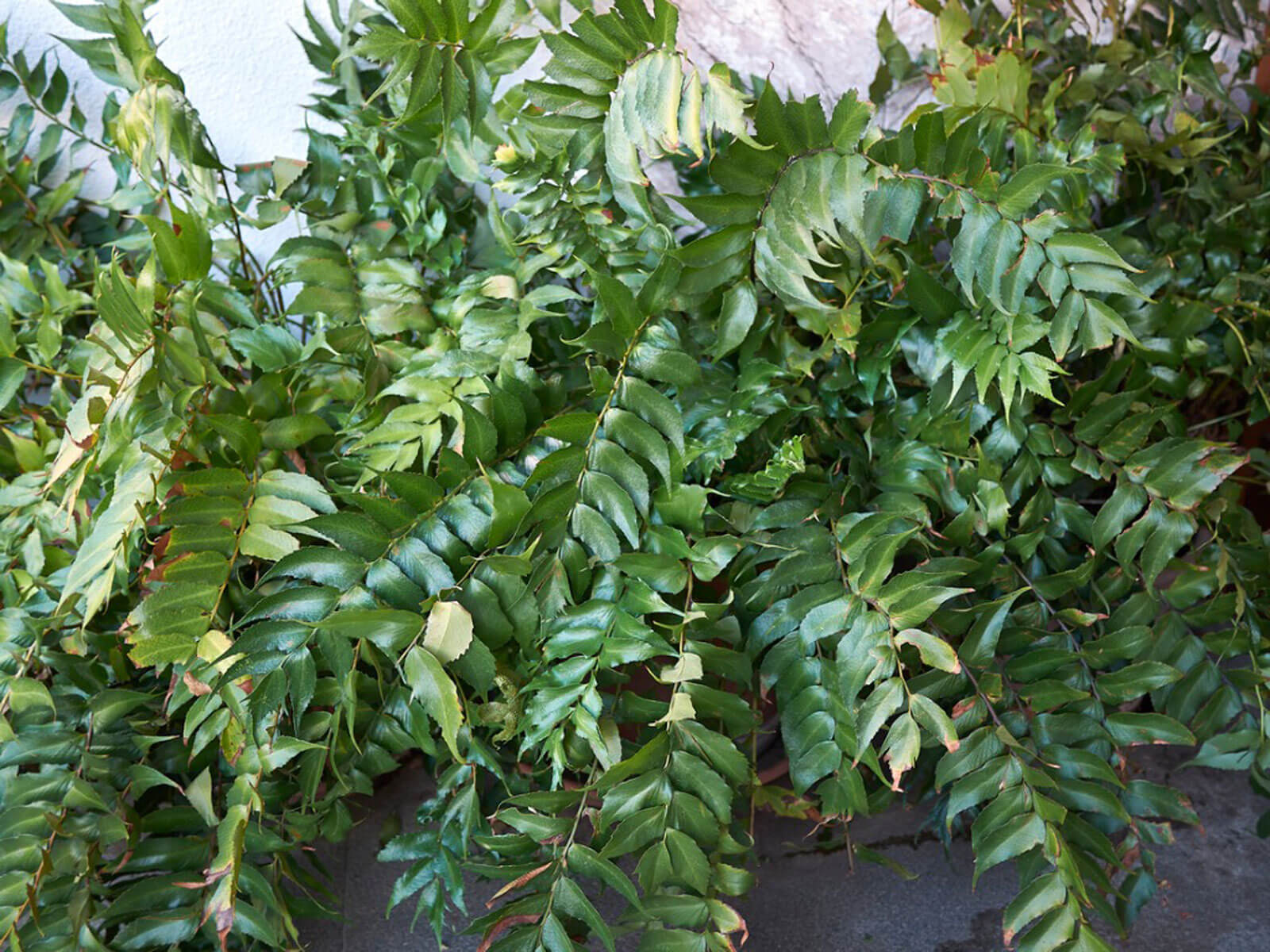
Holly fern is a deep green colored fern. It had fronds which are very glossy and also have a waxy texture. They are further divided into lanceolate segments. These types of ferns have the qualities to grow in both tropical and temperate wood regions. They can grow outdoors as well as indoors.
They can be used in flowerbeds or borders to add the appearance of lush and architectural foliage.
Precautions
- They can be exposed in full shade or partial shade.
- They can grow up to 2 feet.
- They are hardy from USDA zones 6 to 10.
- They can grow in well-drained loam and eve clay. Their pH can be acidic to neutral.
Asparagus Fern (Asparagus aethiopicus)
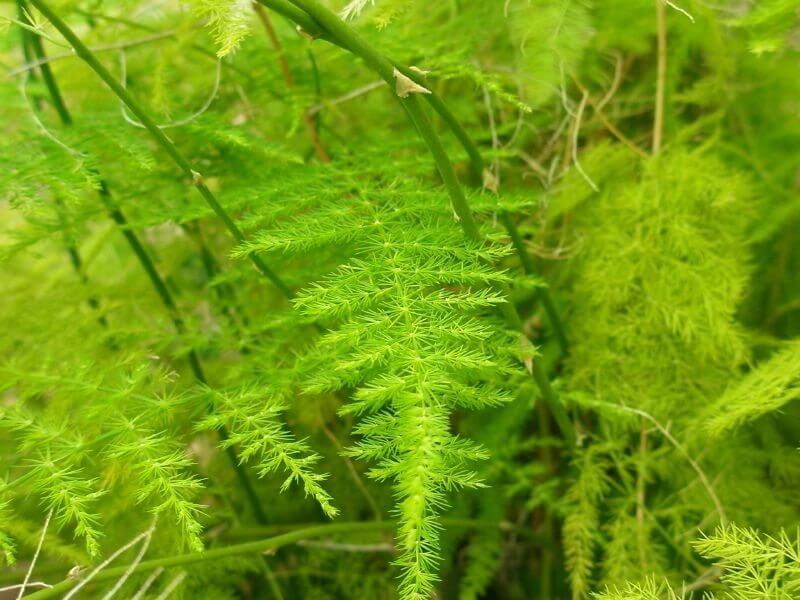
Asparagus fern has long branches with the needle leaves in a bipinnate form. This formation gives it a striking appearance.
The branches of these ferns arch make it a great plant to grow in hanging baskets.
Precautions
- They can be exposed in partially shaded or even entire shaded areas and can also grow under direct.
- They grow only1 to 3 feet tall.
- They are hardy to USDA zones 9 to 11.
- They grow in well-drained soil, which is rich in organic matter. The pH has to be slightly acidic to neutral.
Giant Wood Fern (Dryopteris Goldieana)
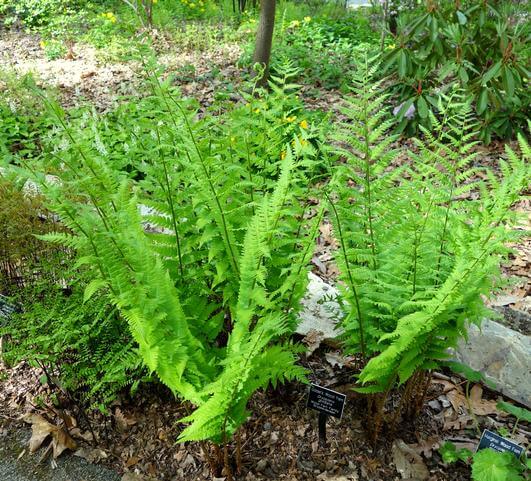
Giant wood fern has fronds that come from a central rosette. They are further divided to form large and composite segments. They have rich foliage with a light pastel green color.
Precautions
- They can grow from partial shade to full shade.
- They grow up to 3 to 4 feet.
- They are hardy from USDA zones 3 to 8.
- They need to have well drained loam, clay, chalk or sandy soils with acidic or neutral PH to grow.
Northern Maidenhair Fern (Adiantum Pedatum)
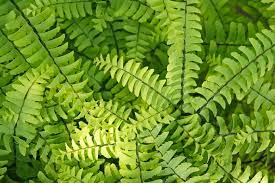
Northern Maidenhair Fern has beautiful, thin, and black stems. Its fronds divide into blades, which look like the wings of insects in shape.
It is shiny, glossy, and pea-green in color. Its fronds neither arch nor grow upright. They grow horizontally from a central rosette.
Precautions
- They can be exposed under partially shaded or fully shaded areas.
- They grow up to 1 to 3 feet tall.
- Their hardiness is from USDA zones 3 to 8.
- They can grow in all types of well-drained soils with PH acidic, neutral or alkaline.
Maidenhair Sleepwort (Asplenium Trichomanes)
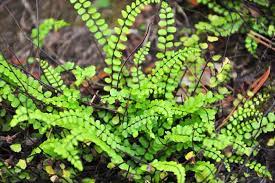
These types of ferns have thorny, black stems. They have fronds that are segmented to grow on both sides. Their foliage is arching, shiny, and light green.
Precautions
- They can be exposed under partial shade or full shade.
- They can grow up to 5 to 6 inches tall.
- They are hardy to USDA zones 5 to 8.
- They can grow in well-drained loam, chalk, clay, and sandy soils. They must have a neutral, acidic, or alkaline pH to grow.
Australian Tree Fern (Sphaeropteris Cooperi)
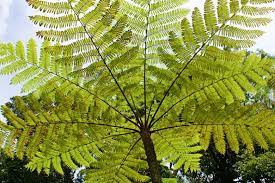
Australian Tree Fern has a long brown trunk with a hairy and fuzzy cover. Its fronds are delicate and arch to form segmented foliage. It is comprehensive, shiny, and light green in color.
Precautions
- They can be exposed in either fully sunny or partially shaded areas.
- They can grow up to 30 feet tall.
- They are hardy from USDA zones 11 and above.
- They grow in well-drained loam or sandy loam soils. They need an acidic to slightly acidic PH.
Rabbit’s Foot Fern (Davallia Fejeensis)
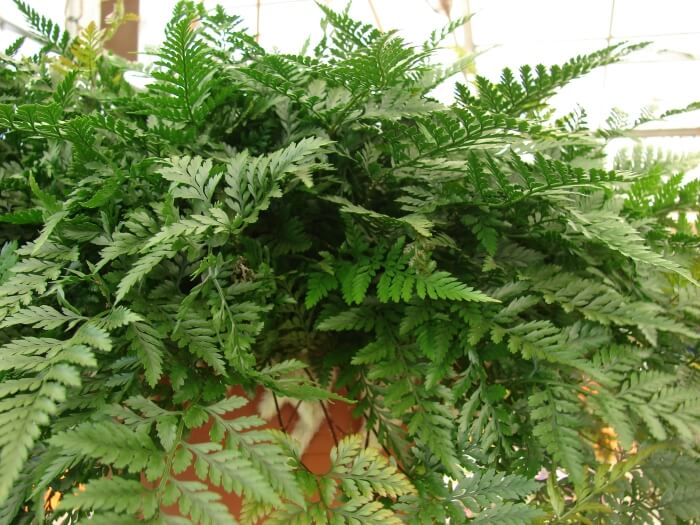
Rabbit’s foot Fern brings its name from fuzzy rhizomes, which grow out of the soil that looks like rabbit’s feet. They have thick fronds, which are lacy and very decorative. They are divided into many segments. These types of ferns are epiphytes.
Precautions
- They cannot be exposed under direct sunlight but can grow in lightly shaded or full shaded areas.
- They can grow up to 1 to 3 feet.
- Their hardiness is from USDA zones 10 to 11.
- They grow in well-drained loamy, sandy, and peat moss soils.
Lacy Tree Fern (Cyathea Cooperi)
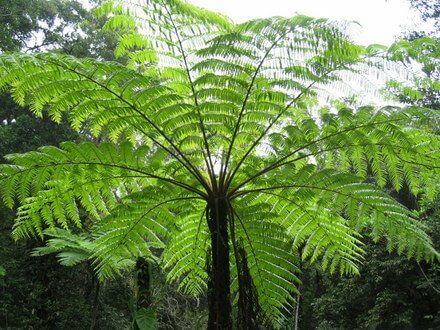
Lacy tree fern is a large species that belongs to Australia. These types of ferns look like a palm tree. When it is still fuzzy and brown, their trunk will open up into branches that look like long fingers. The branches continue to make fronds. They then divide them into smaller fronds with long and large segments.
Precautions
- These types of ferns can grow in partially shaded areas.
- They can grow up to 15 to 20feet tall.
- Their hardiness is from USDA zones 9 to 11.
- They can grow in well-drained loamy or sandy soils having a neutral or slightly acidic pH.
Southern Maidenhair Fern (Adiantum Calillus-Veneris)
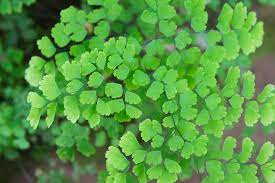
Maidenhair, what a beautiful name, isn’t it? There’s a beautiful story behind it as the name. The name comes from its appearance. As the fronds of this fern are divided into three leaflets creating frills, they look like the hair of Venus.
These types of ferns are green in color with dark blue stems. This contrast gives it more attraction. It arches as it grows the clusters of green. It grows between rocks, in pots, and even in borders and flower beds.
Precautions
- It grows in partially shaded and entire shaded areas.
- It grows from 12 to 18 inches.
- It is hardy to USDA zones from 8 to 11.
- Humid and well-drained soil are needed, with a pH that is either neutral or alkaline. It can grow in loam, chalk, and sandy soils.
Hard Fern (Blecchum Spicant)
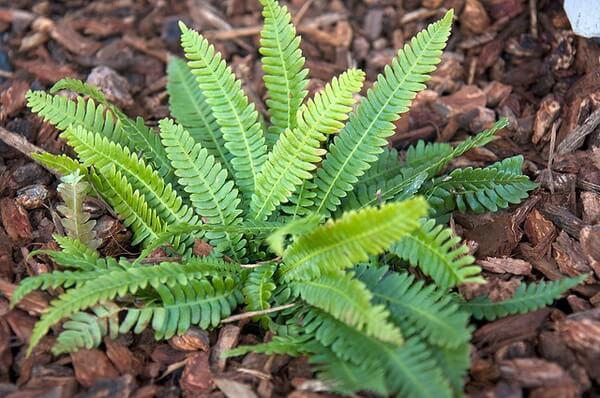
Hard fern has fronds that consist of oblong segments. These segments grow perpendicular to the fronds. Their fronds are tongue-shaped and look tailored. These ferns are in sphere shape as their foliages grow from the central rosette to create rich and shiny foliage.
As the name speaks, they are cold hardy plants. They look great in containers, beds, borders, under roses, and shrubs.
Precautions
- They can grow in partially shaded and entire shaded areas.
- They can grow up to 1 to 2 feet.
- Their hardiness to USDA zones is from 5 to 9.
- They can grow in less drained soil, but well-drained is always preferable. They can also grow in loam or clay, and the soil’s pH can be neutral or acidic.
That Being an Interesting Read About the Types of Ferns, Here Are Some Tips on How to Decorate Your Ferns
If you are creative enough, you will quickly understand that ferns are always beautiful if you made the right choice to be put in different areas. Some of them are bushy, and some of them are not. But they add a significant decorative element regardless of where they are put.
Hanging baskets are a great idea to place ferns as they are bushy and look very cute hanging on the walls. They add a more serene look to your plain rooms.
If you are an indoor plant lover, you can choose ferns without any second thought as they look great in any indoor space, i.e., homes, offices, etc.
Some people are crazy gardeners, and you can ask them how beautiful an outdoor fern for your garden can be. They add massive green to your garden and make it look livelier.
As they can grow under the tree shades, they look like the beds of the plants. The greener the ground, the prettier your garden looks.
You can also place them as a contrast to other plants to add the element of elegance and style to your garden.
Make sure to pour enough water into your plant and keep the soil moist and dump as most of the ferns need an ample amount of water to survive.
They get more beautiful as they grow and add more aesthetics to your gardens. So, understand what type of fern you are buying and treat it accordingly.

